Role: UI Design - Design systems
Date: 2022
Company: Globant
Role: UI Design - Design systems
Date: 2022
Company: Globant
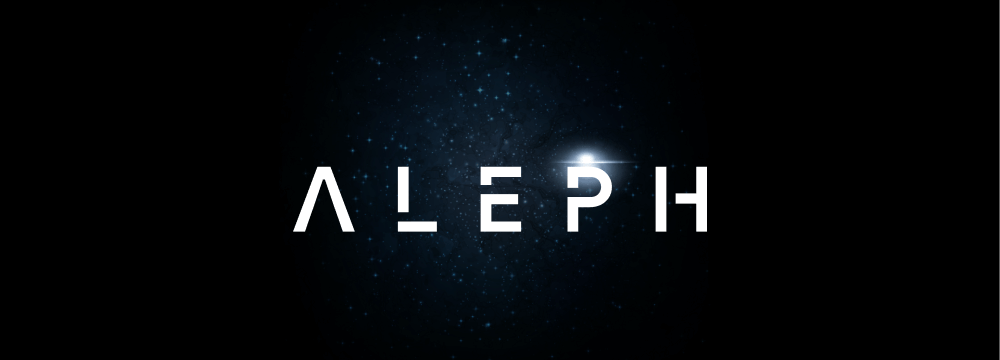
Demystifying the world, one map at a time. Aleph is an intuitive platform that provides high-resolution satellite imagery and unlocks the power of geospatial data.
Focus: Built a cross-platform design system from scratch to unify map-based tools, improving design consistency and developer efficiency by 30%.
Collaboration: Partnered with 4 engineers and 2 designers to align component specs between Figma and React, establishing versioning and documentation workflow for system updates.
Imagine a world where users struggle to navigate a complex interface designed for satellite imagery tasks, especially small businesses and users with simpler needs. This was the reality for Aleph, an innovative geospatial platform offering high-resolution satellite imagery and geospatial data. Initially tailored to specialized researchers, educators, and analysts, Aleph now sought to expand its reach to include common users with simpler requirements.
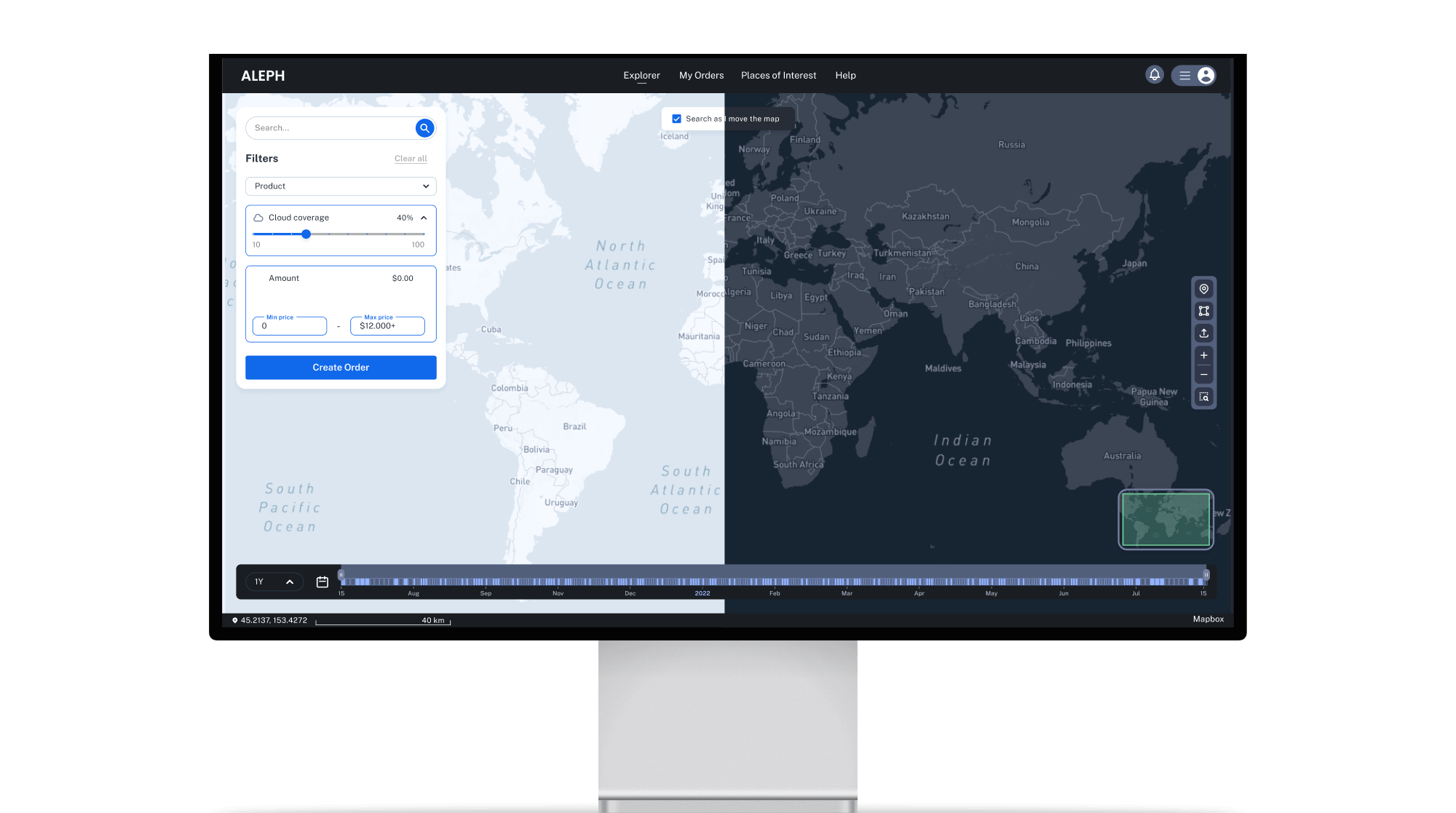
To tackle this challenge, we assembled a skilled team of UI/UX designers, front-end developers, and project managers. Working closely with Aleph’s stakeholders, we set out on a journey to craft a design system that could standardize the user experience across multiple applications, ensuring consistency and scalability for the future.
Our first step was to immerse ourselves in Aleph’s ecosystem. Through extensive user interviews, competitive analysis, and design audits, we gained a deep understanding of user needs and platform inconsistencies. Here are some key findings that guided our approach:
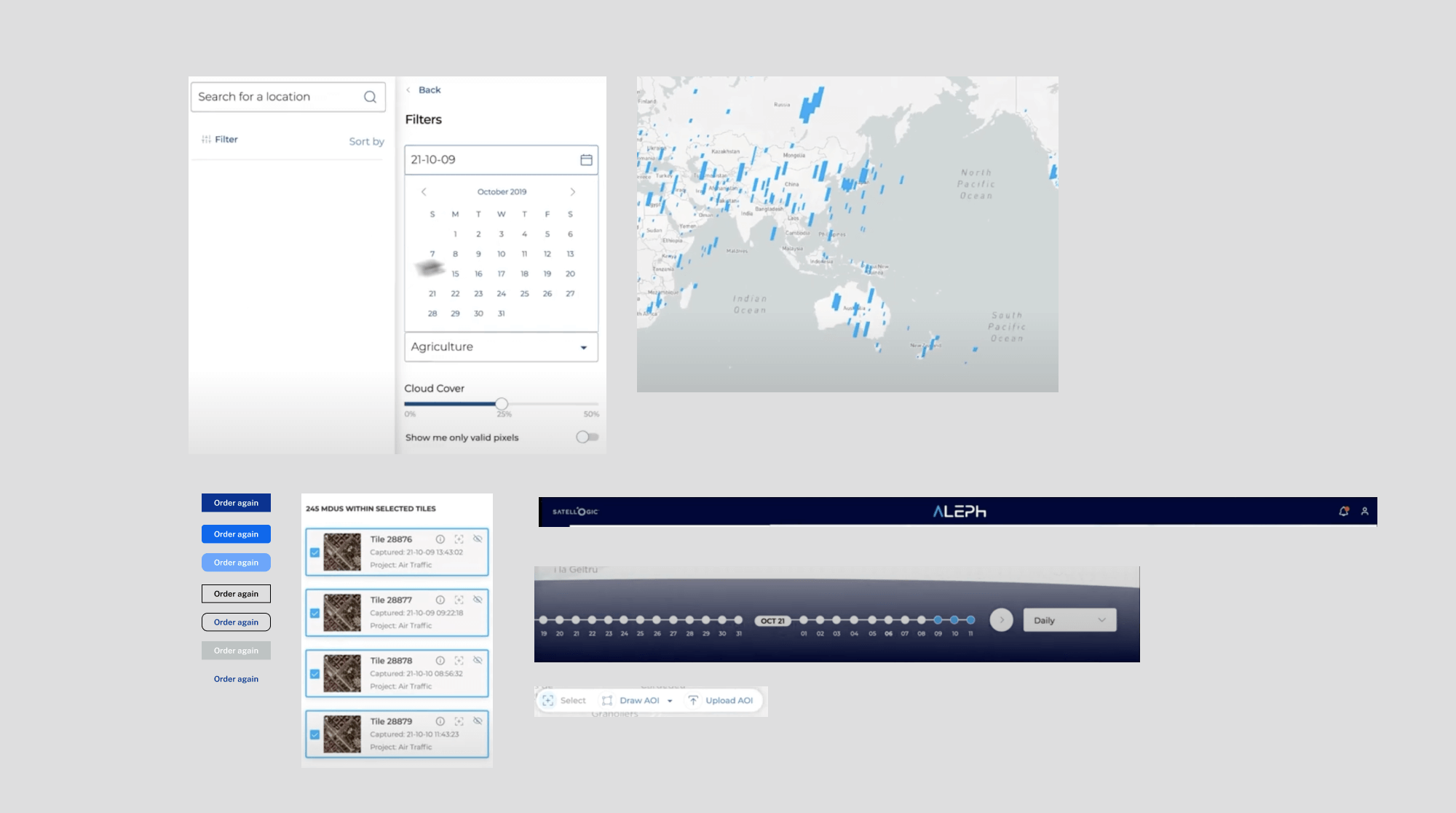
Our first step was to immerse ourselves in Aleph’s ecosystem. Through extensive interface review, competitive analysis, and design audits, we gained a deep understanding of user needs and platform inconsistencies. Here are some key findings that guided our approach:
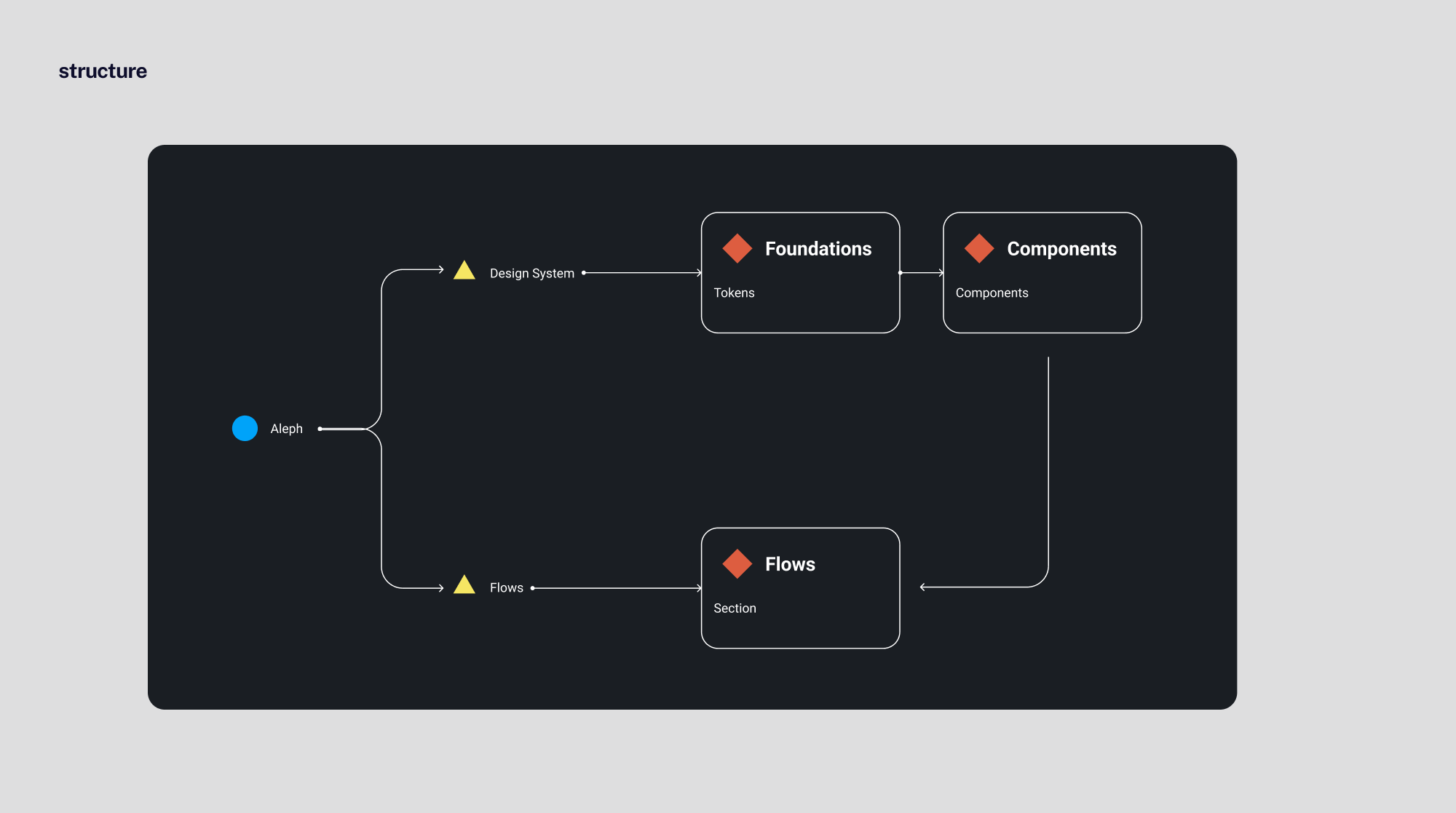
As our designs took shape, close collaboration with the development team was essential in bringing the ALEPH Design System to life. Following the atomic design methodology, we created a comprehensive foundation, component library, and design patterns, establishing a scalable system structure that positively impacted team workflow and reduced design implementation time.
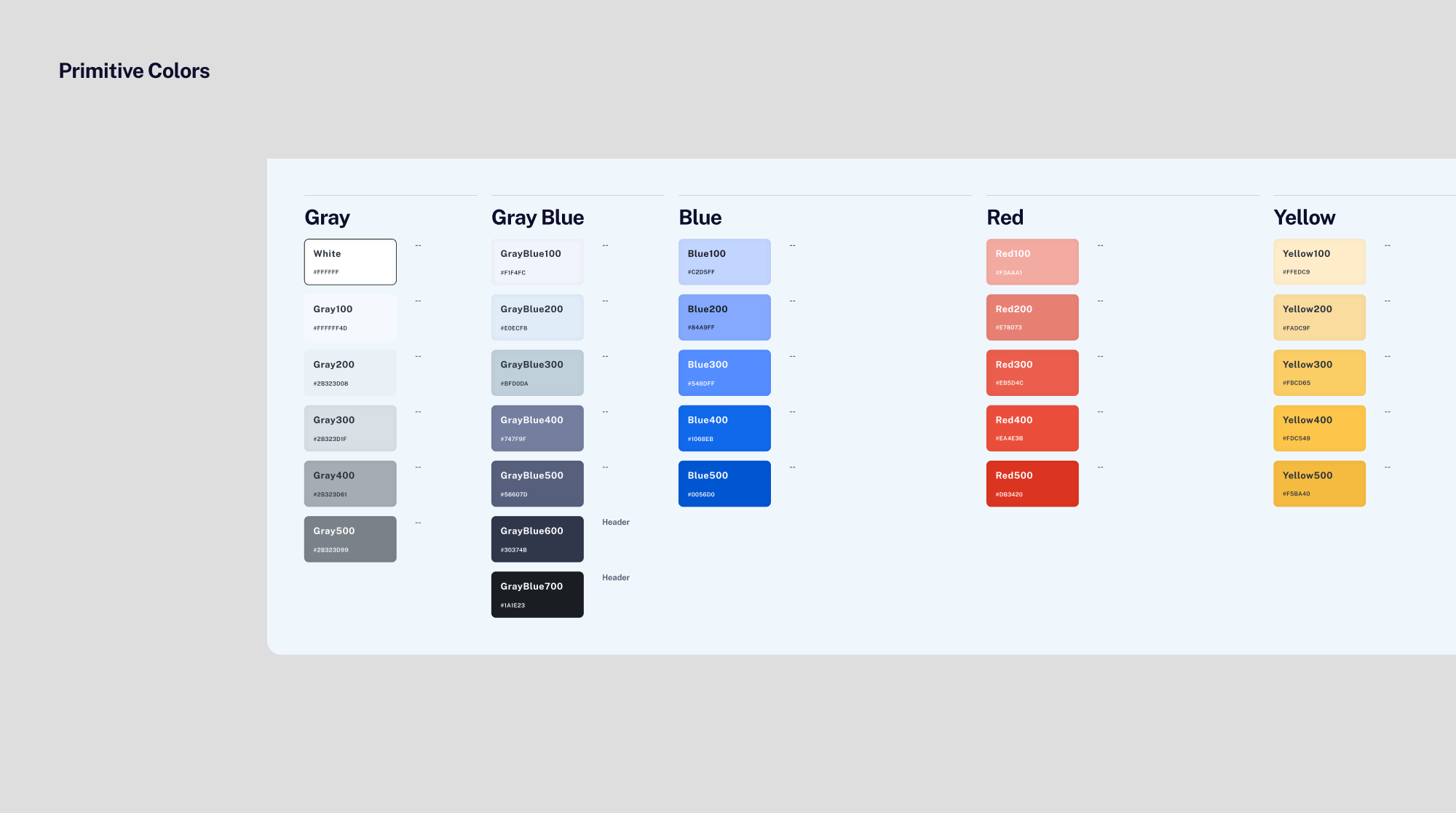
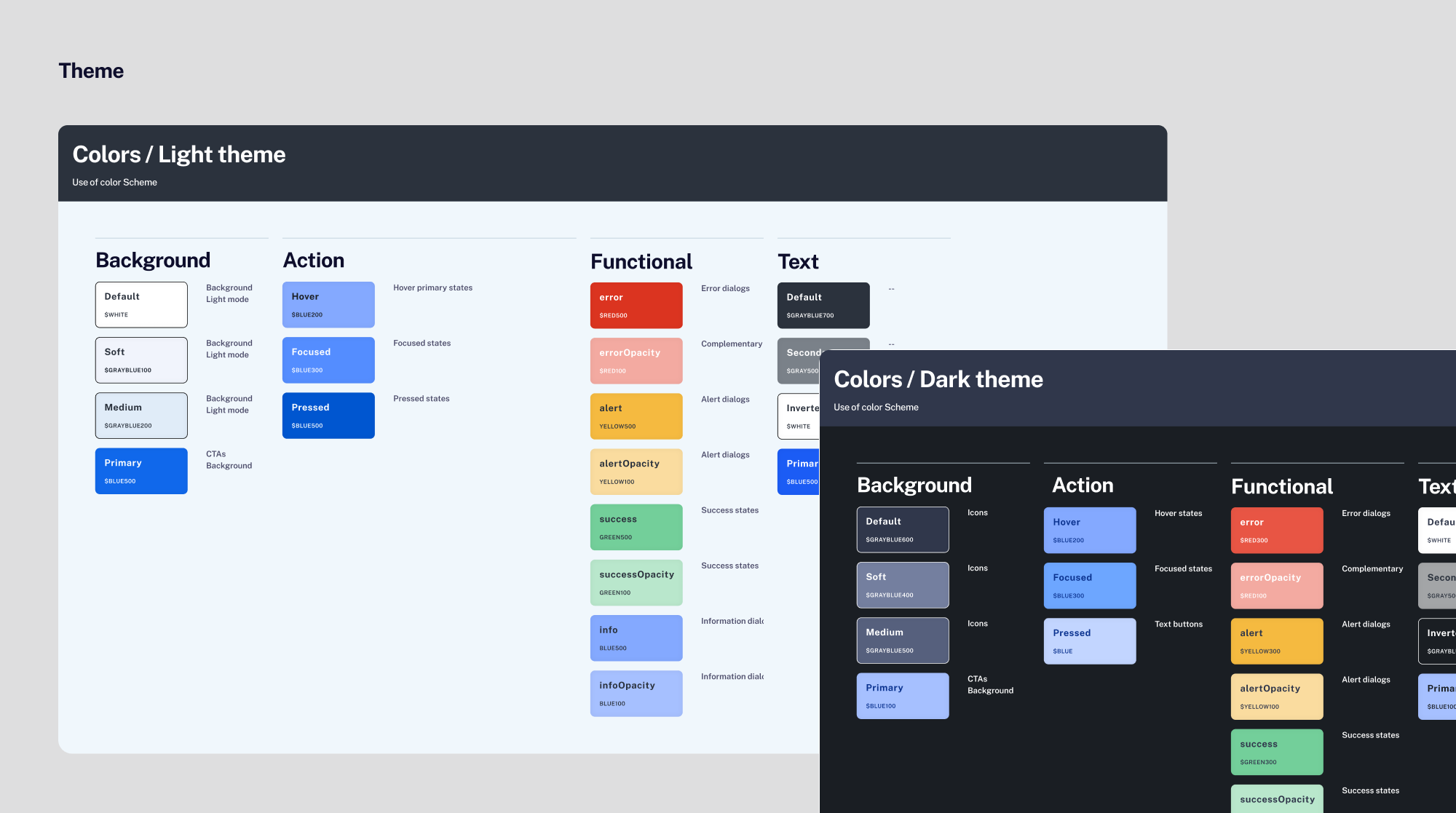

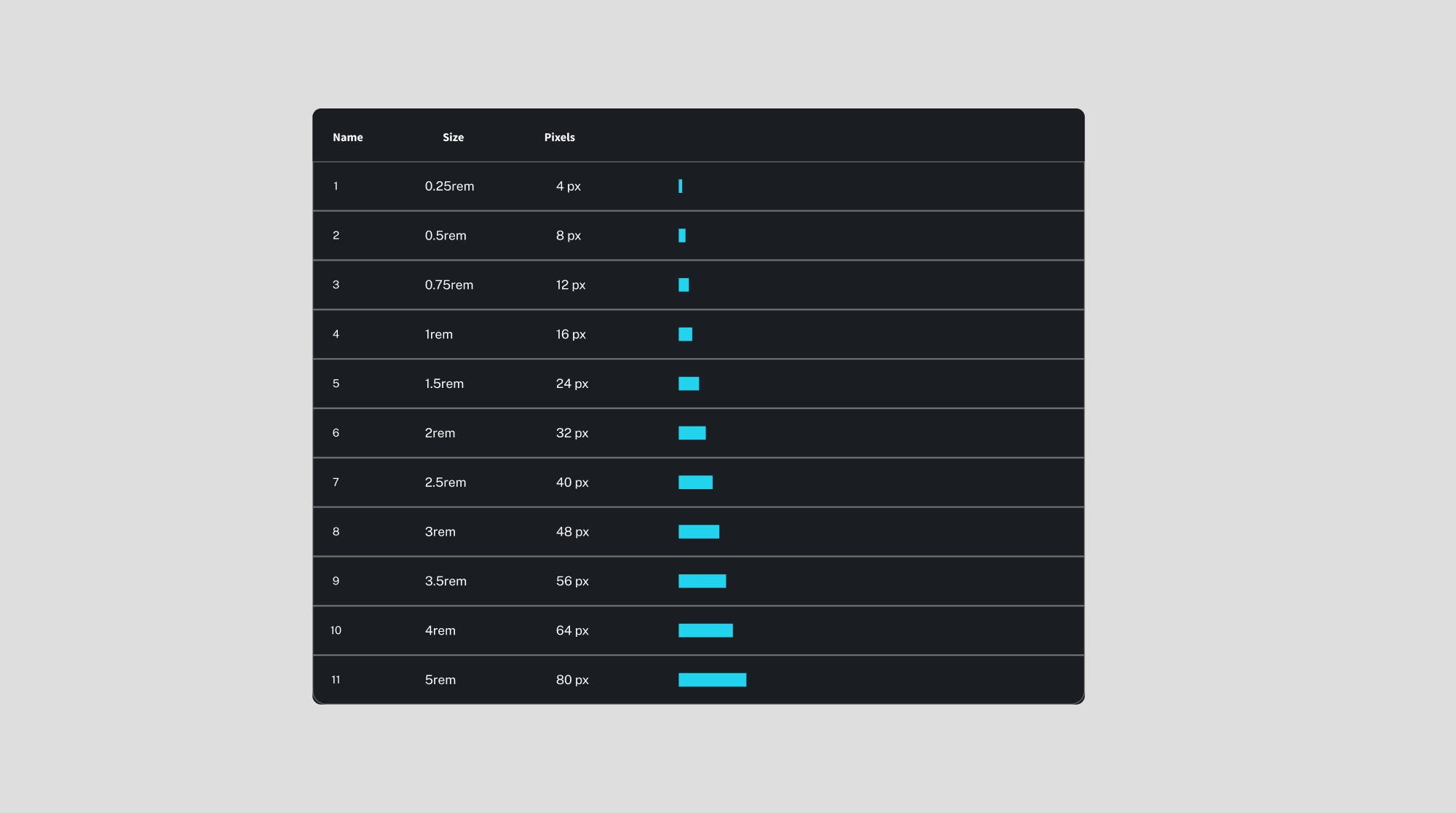
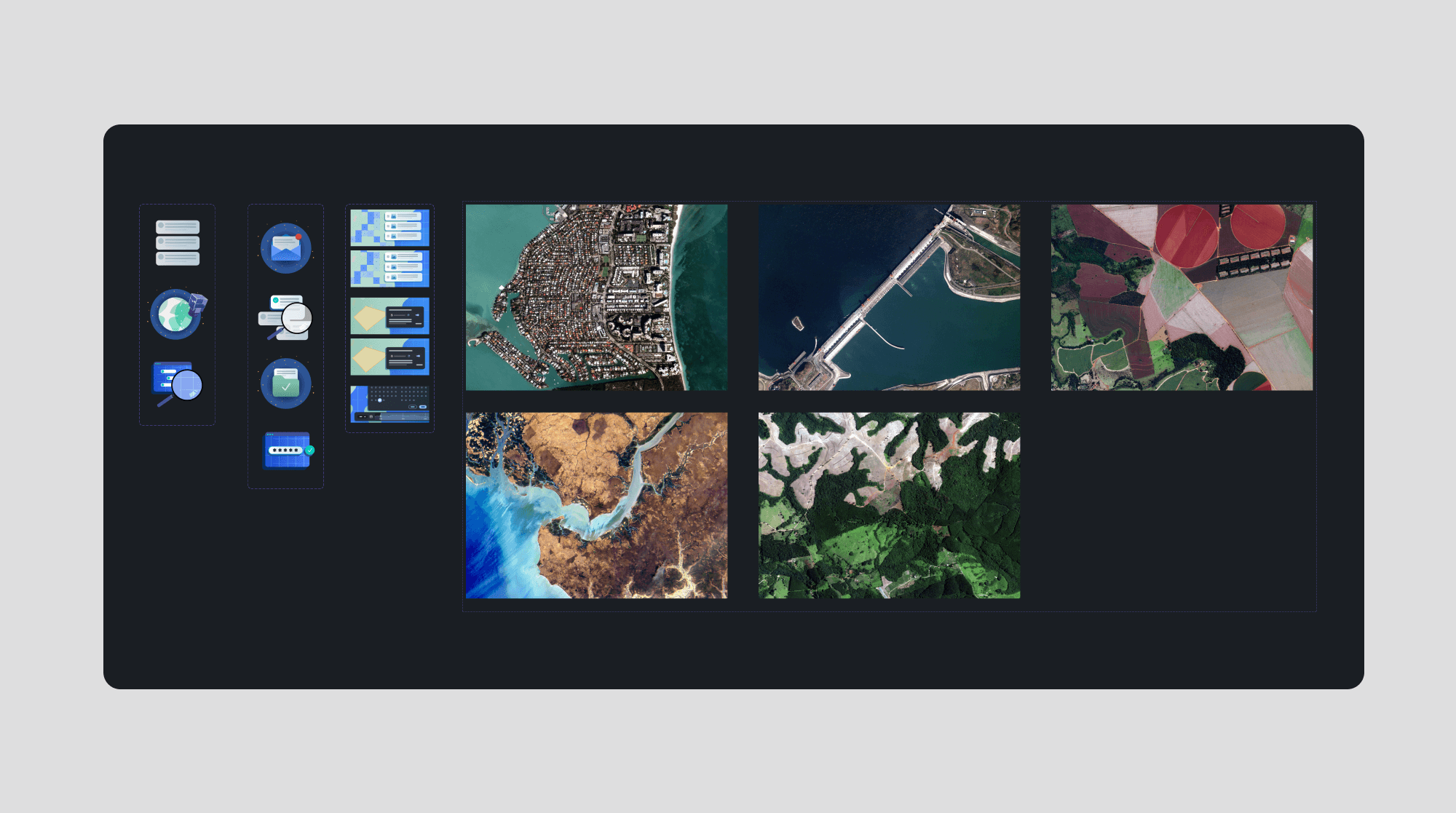
Following the atomic design methodology, the component library includes a range of elements, starting with fundamental building blocks and scaling up to complex components required for data-centered map visualizations and interactions.
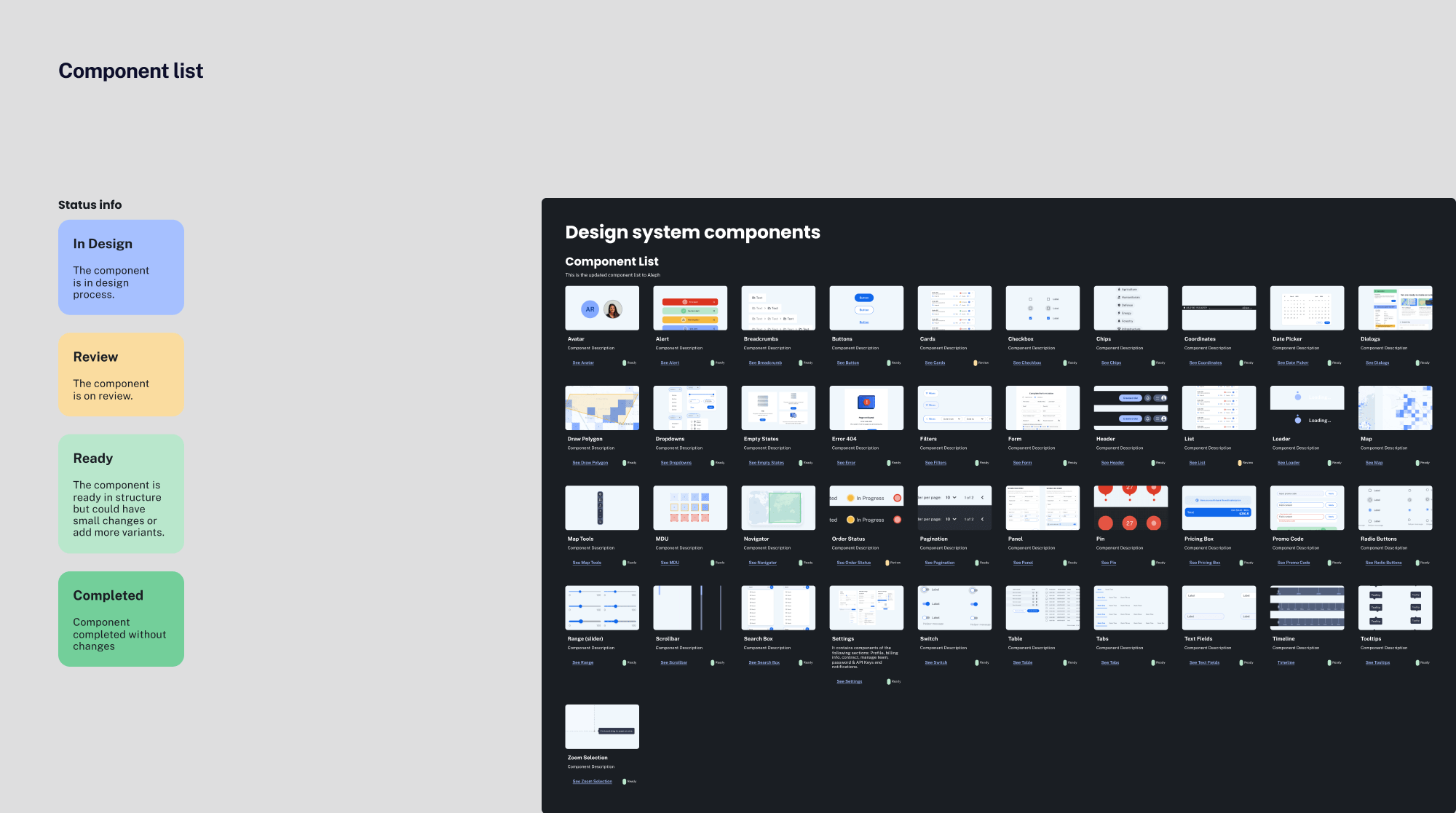


The culmination of our efforts resulted in a cohesive design system that delivered a consistent user experience across all applications. The impact was both immediate and transformative:
Reflecting on this journey, we celebrate the Aleph team’s dedication to innovation and their commitment to a unified design approach. The ALEPH Design System is built to scale, with adaptable design tokens, a component library, and a solid foundation that will evolve as Aleph grows. Moving forward, we look forward to deepening our partnership, enhancing the system, and exploring new ways to create engaging and intuitive experiences for Aleph’s users.